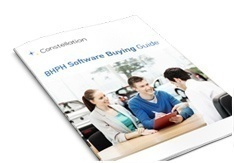In previous articles I have discussed the dilemma dealers face regarding Cash In Deal with the current high state of wholesale vehicle prices and additional potential sources for BHPH inventory. This month I’d like to take a look at inventory pricing.
After all reconditioning has been completed; the person responsible for establishing the selling prices of your inventory should drive the vehicle. Only after driving the vehicle should he then establish pricing for the vehicle. It is very difficult to accurately price a vehicle without driving it to see how it compares with other units in our inventory. He should then start with a price where the vehicle earns a rate of return (ROR) of between 80 to 150%. The expected ROR will vary with the price of inventory you choose to stock at your dealership; lower priced inventory will tend to be towards the higher end of the ROR spectrum, perhaps even over 150%, while higher priced inventory will have a lower ROR necessary to achieve your profit objectives. The important point is you should establish a Rate of Return policy that is the starting place for your pricing strategy based upon the average inventory cost and profit requirements of your dealership. You or your manager should then consider such things as mileage, overall mechanical condition, vehicle appearance and the current market for that type of vehicle in order to make the pricing competitive in your area. Of course, the largest component in pricing a vehicle is the gross profit you need or want to earn on each vehicle.
Gross profit must be viewed in a broader prospective in the Dealer Controlled Financing business than it is in the retail business. In retail sales, gross profit is a point of purchase event. In the DCF business, it is a long-term event. In the retail business, there is one risk factor associated with gross profit; not enough. In the DCF business, there are two risk factors associated with gross profit; not enough and too much. Not enough occurs when the gross profits are not sufficient to sustain the company at a profitable level. Too much occurs when the amount of gross profit is totally offset by the additional collection expense and delinquency losses caused by this level of gross profit. There is a point where every dollar of additional gross profit is offset by the loss of one dollar due to higher collection costs, delinquencies, repossessions and charge-offs.
Gross profit that is too high can cause a domino effect in the organization that is practically irreversible. As gross profit increases so does the amount being financed. Since the customers can only afford a certain range of payments, the only way to compensate for this higher amount financed is to increase the length of the contract. At some point the length of the contract will exceed the life of the vehicle. As the vehicle nears the end of its useful life, it will require more repairs. As the repairs to the vehicle increase, delinquency will also increase as customers are forced to use their payment money to keep their vehicles operating. Think back to the one element of delinquency that is never disputed; if the car stops running, the customer stops paying. You are not being responsible for the customer if you sell at prices that are not related to the quality of the vehicle.
The need to rewrite accounts to assist customers by moving payments to the end of the loan or adding repair expenses to the account further extends the length of the contract. Higher priced inventory only exacerbates this issue if you continue to ask for excessive gross profits. To control delinquency in this situation you may be forced to adopt more aggressive collection techniques.
The next alternative is to accept the higher delinquency and repossession rates as part of doing business with ‘this’ segment of the market. This can causes you to develop an attitude about ‘this’ kind of customer and, unfortunately, you may convey that attitude to your employees and customers. The employees feel the stress from having to be an adversary with every customer who comes in to make a payment. The customers will begin to feel like you are “hammering” them for payments and that they have been taken advantage of. And, when the vehicle is paid off, the customer does not want to do business with your company again and the employees are glad to be rid of another “bum”.
The midway point between grosses that are too low and the collection suicide of excessive gross is the gross profit amount that is one dollar short of causing a contract to extend one day beyond the life of the vehicle. We call this hitting doubles. Unlike the conventional retail lot where everyone tries to hit a home run on every deal, hitting doubles is your goal in the DCF business. You can make a lot of money hitting doubles. Your vehicles should be priced so you can make profits and be profitable but your profits should not affect your delinquency.
As published in Special Finance Insider magazine



